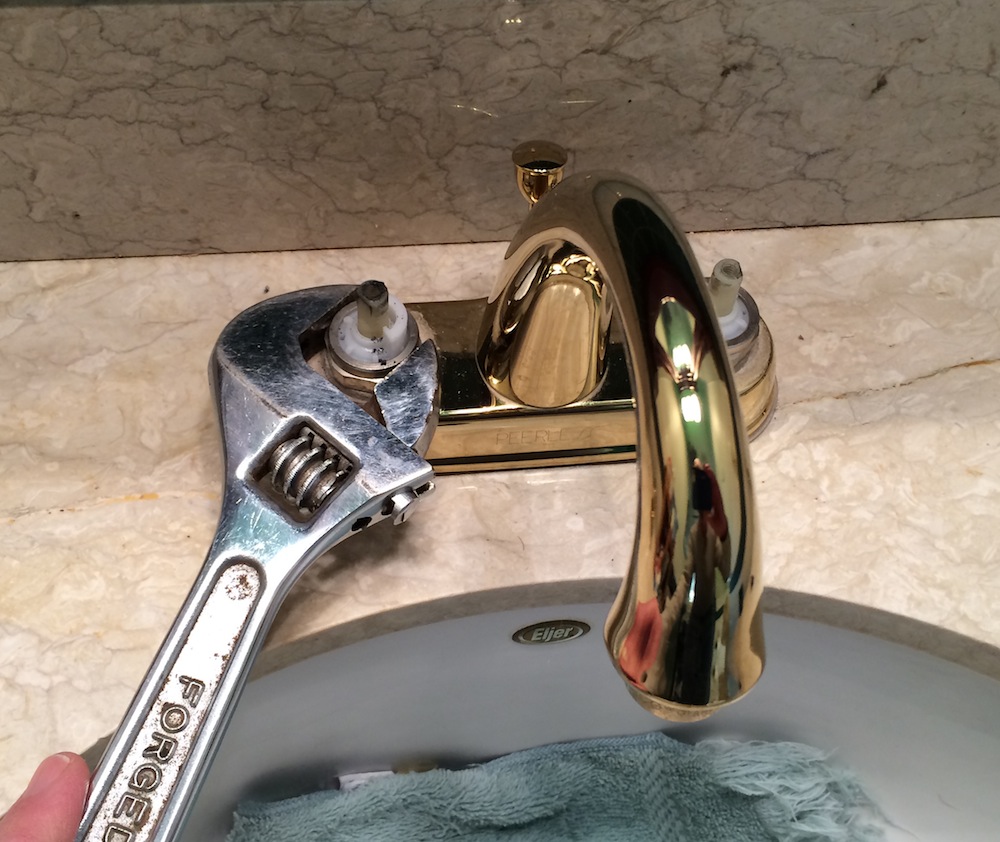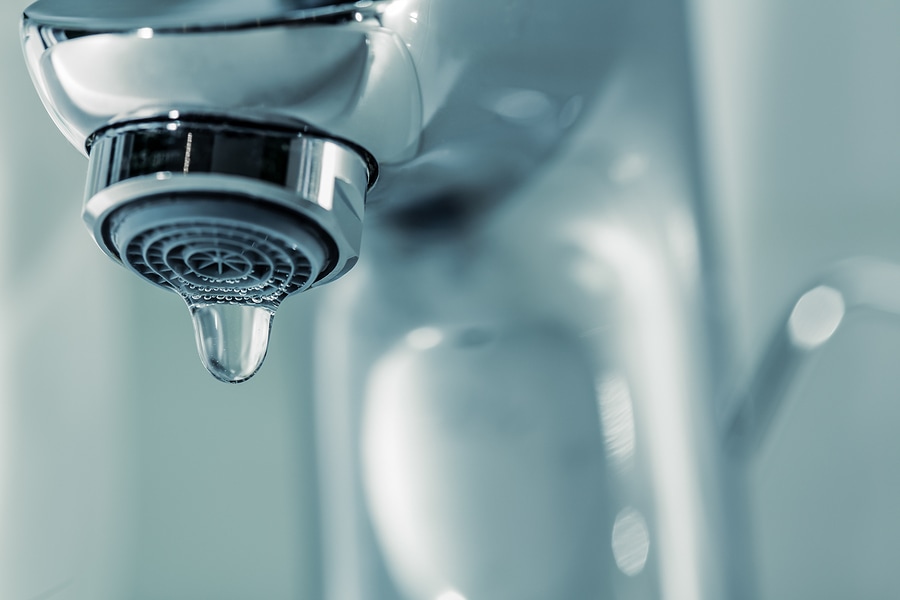The publisher is making a number of good pointers related to What Causes Leaky Faucets & How To Fix Them overall in the article which follows.

Leaking taps may appear like a small trouble, however their effect goes beyond just the annoyance of the noise. From wasting water to sustaining unneeded monetary costs and health threats, neglecting a leaking tap can cause different consequences. In this article, we'll look into why it's important to address this usual home concern immediately and efficiently.
Wastefulness of Water
Ecological Impact
Leaking taps contribute substantially to water wastage. According to the Epa (EPA), a single tap trickling at one drip per second can throw away more than 3,000 gallons of water annually. This not just strains water sources but likewise influences communities and wild animals depending on them.
Financial Prices
Increased Water Expenses
Past the ecological impact, trickling taps can inflate water bills significantly. The collected wastefulness with time converts into greater energy expenses, which might have been stayed clear of with prompt fixings.
Possible Residential Or Commercial Property Damage
In addition, long term leaking can lead to harm to fixtures and surfaces bordering the faucet. Water buildup can trigger discoloration, rust, and even architectural issues if left ignored, resulting in additional fixing costs.
Wellness Concerns
Mold And Mildew and Mold Growth
The continuous visibility of moisture from a leaking tap creates a suitable atmosphere for mold and mildew and mold growth. These fungi not only jeopardize interior air top quality but also position health and wellness dangers, particularly for individuals with breathing conditions or allergies.
Waterborne Illness
Stationary water in dripping faucets can end up being a breeding place for microorganisms and various other virus, increasing the risk of waterborne conditions. Impurities such as Legionella microorganisms grow in stationary water, possibly bring about serious illnesses when consumed or breathed in.
Do it yourself vs. Expert Repair service
Benefits and drawbacks of Do It Yourself Fixing
While some might try to repair a leaking tap themselves, do it yourself repair work include their own set of challenges. Without appropriate knowledge and tools, do it yourself attempts can exacerbate the problem or lead to insufficient repairs, extending the problem.
Benefits of Working With a Professional Plumber
Hiring an expert plumber makes sure that the underlying source of the dripping faucet is attended to successfully. Plumbers possess the competence and tools to detect and fix tap concerns effectively, conserving time and reducing the danger of further damage.
Step-by-Step Overview to Taking Care Of a Dripping Faucet
Tools Required
Before trying to take care of a dripping tap, collect the necessary devices, including an adjustable wrench, screwdrivers, substitute parts (such as washers or cartridges), and plumber's tape.
Usual Faucet Issues and Their Solutions
Recognize the type of tap and the certain issue triggering the drip. Usual issues consist of worn-out washing machines, corroded valve seats, or damaged O-rings. Refer to maker guidelines or online tutorials for step-by-step support on fixings.
Preventive Measures
Regular Maintenance Tips
To avoid dripping faucets, carry out routine maintenance such as cleaning up aerators, checking for leakages, and changing damaged components immediately. In addition, take into consideration mounting water-saving gadgets or updating to a lot more reliable components.
Value of Prompt Fixes
Attending to leaking faucets as quickly as they're seen avoids further water wastage and prospective damages, ultimately saving both water and money in the long run.
Impact on Property Worth
Understanding of Well-Maintained Home
Keeping a building in good condition, consisting of dealing with maintenance concerns like trickling faucets, enhances its perceived value and value among prospective purchasers or occupants.
Influence on Resale Value
Characteristics with well-kept plumbing fixtures, including faucets, command greater resale worths in the real estate market. Addressing trickling taps can contribute to a positive impact throughout home evaluations and negotiations.
Ecological Obligation
Individual Payment to Conservation
Taking responsibility for fixing leaking faucets lines up with more comprehensive initiatives toward water preservation and ecological sustainability. Every person's actions collectively make a considerable impact on maintaining valuable sources.
Sustainable Living Practices
By focusing on prompt fixings and adopting water-saving routines, people contribute to sustainable living practices that profit both present and future generations.
Conclusion
Addressing a leaking faucet exceeds simple convenience; it's an important action towards conserving water, reducing financial costs, and protecting health and residential or commercial property. Whether through DIY fixings or professional assistance, acting to fix leaking taps is a tiny yet impactful means to promote responsible stewardship of resources and contribute to a much healthier, more sustainable future.
How to Fix a Leaky Faucet: Step-by-Step Repair Guide
A leaky faucet may seem like a simple annoyance, but if it's not fixed promptly, that leak could cost hundreds to potentially thousands. From water damage to mold, mildew, and high water bills, even a tiny leak can be catastrophic if left unattended. Damage like this can even affect the overall value of your home, so it's important to take the right approach for leaky faucet repair. You may need the help of a plumber in some cases, but we've got a few tips you can try on how to fix a leaky faucet before calling the pros.
Four Faucet Types
When you're learning how to fix a leaky faucet, the first step is knowing what kind of faucet you're working with! There are four common types.
Cartridge Faucets
Cartridge faucets come in one- or two-handled varieties. In one-handled cartridge faucets, hot and cold water combines in a single cartridge. In the two-handled versions, hot and cold water are controlled separately and mixed in the faucet.
Ball Faucets
Ball faucets have a single lever you push up and down to adjust the pressure and rotate to change the temperature. A slotted metal ball controls the amount of water allowed into the spout.
Compression Washer Faucets
They're the oldest type of faucet, but they're still used in many homes — especially older ones. Compression faucets have two separate handles that, when turned, raise or lower the washer that seals a water valve. This valve stops water from flowing through the faucet when it is turned off.
Disc Faucets
Disc faucets rarely need to be repaired due to their maintenance-free design. The water flow is controlled by two discs — the upper one raises and lowers against a fixed lower disc, creating a watertight seal. If your disc faucet starts leaking, you may need to replace the seals or clean residue buildup from the inlets.
Fixing a Leaky Faucet
Step 1: Turn Off the Water
Whether you're learning how to fix a leaky bathtub faucet or how to fix a leaky kitchen faucet, always turn off the water supply to your working area when you're fixing a leak. The last thing you want is a flood added to your list of things to fix.
Look for the shutoff valves below your sink or around the tub and turn them clockwise to stop the water flow. If your faucet doesn't have shutoff valves, you may need to turn off the water for the whole house. Check to make sure it's off by turning the faucet on. If nothing comes out, you're ready to start the repair.
Step 2: Take Apart the Faucet
How you disassemble your faucet depends on the type of fixture you have. You can use a flathead screwdriver to remove the caps on top of the handle or handles for cartridge and compression faucets. Inside, you should see handle screws. Unscrew these with a screwdriver to remove the handle.
Disc- and ball-style faucets will typically have an inlet screw near the handle, and removing that will reveal the interior of the faucet.
Detach the Valve Stem
For cartridge- and compression-style faucets, you'll see the inner valve stem or cartridge once you remove the faucet handles. If you have a compression faucet, unscrew the brass valve stem. If you have a cartridge faucet, pull out the cartridge. If your cartridge has been in place for a while, it may require some tools or extra force to remove it due to mineral deposits.
Examine and Replace Parts
Once you've removed the parts, check them out to confirm what needs to be replaced. You may see corroded rubber washers, O-rings, stems, or cartridges. On a ball-style faucet, check the seats and springs for damage.
If you need to repair a leaky disc faucet, check the inlet and seals on the lower disc.
Once you determine what parts must be replaced, visit your local hardware store. Bring the damaged parts with you to ensure you can purchase the correct components to replace them.
Clean Valves and Faucet Cavity
If you've removed a stem or cartridge, you may notice mineral buildup in the faucet's threads. Use white vinegar to clean the valve seat by soaking it for a few minutes, then scrub it away with a soft toothbrush and rinse with warm water. You can also clean the interior of the faucet in the same way.
Reassemble the Faucet
Once your faucet is cleaned and the required parts have been replaced, it's time to reassemble it. Put the pieces back together and slowly turn the water supply back on. Doing this slowly is crucial because too much initial water pressure can damage the new hardware you've just installed.
https://homewarranty.firstam.com/blog/how-to-fix-leaky-faucet

I have been very taken with Why It's Important to Fix Leaky Faucets and I am assuming you enjoyed reading the entire article. Are you aware of somebody who is excited about How to Fix a Dripping or Leaky Faucet ? Feel free to share it. Thank-you for your time invested reading it.